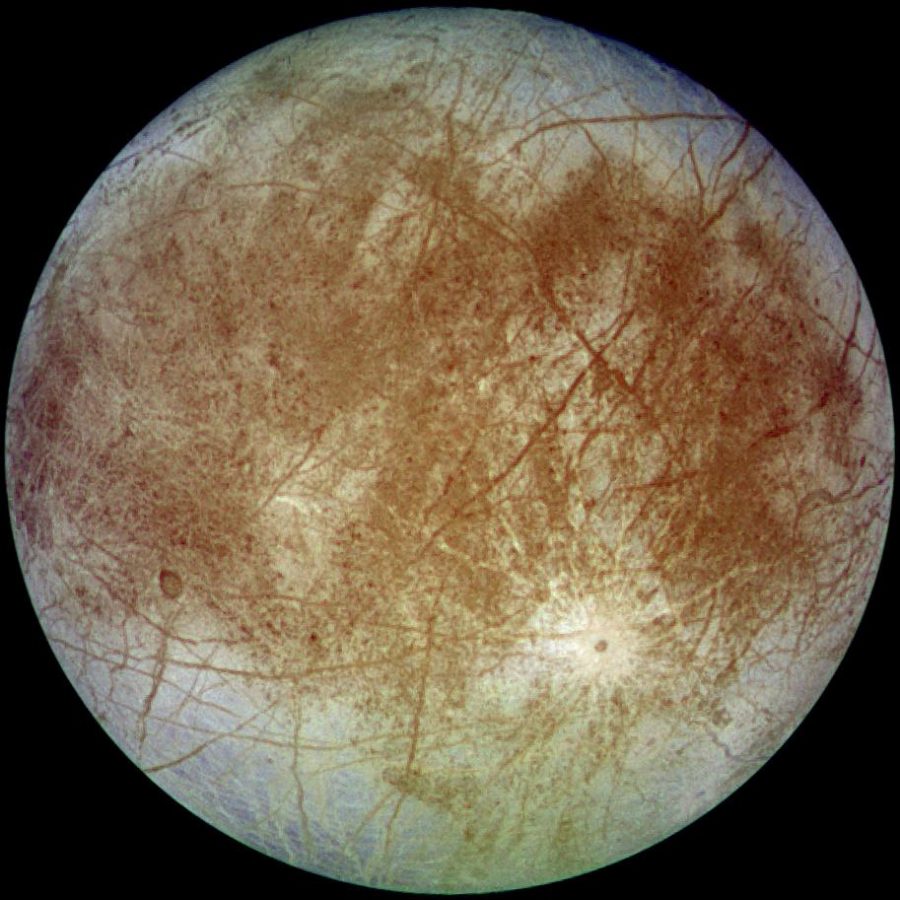In a photograph unveiled by NASA on Sept. 26 (but captured by the Hubble Space Telescope on Jan. 26, 2014) a team of astronomers detected what they believe are active geysers of water erupting on Europa, one of Jupiter’s moons. This observation legitimizes the idea that there is an ocean underneath the surface of this moon, an idea that has recently come to the forefront of scientific inquiry.
Although NASA has found evidence that water exists within our solar system, this is one of first studies that provide tangible facts to support the theory.
Upper School Science teacher Richard Taylor is particularly fascinated with this discovery of water plumes.
“These plumes are evidence that there really is water under there, and that there is a lot,” Taylor said.
The thought of a body of water existing in the solar system is one that opens up an abundance of opportunities for life to exist outside of earth. Most likely, many microscopic species thrive in Europa’s ocean environment. This probable presence of life on Europa thus probes one to pose the ultimate question: are there other life forms that exist throughout our solar system?
Sophomore Sarah Ryan, who takes the Upper School astronomy course, has taken an interest in the plumes forming on the surface of Europa.
“The tidal force that Jupiter exerts on Europa is what causes the plumes to form,” Ryan said. “Without that force, the cracks would not be created and there would be no geysers.”
Europa differs from other moons because its surface is composed entirely of ice, causing the moon to be more prone to getting cracks in its icy, exterior shell. Scientists infer that it is the cracking of this ice that thus allows the water trapped beneath the moon’s surface to escape, bursting through the ice in the forms of geysers.
These cracks in the ice do occur naturally, they are formed when the tidal force comes into play. Because it is one of Jupiter’s moons, Europa lies in a vicinity close enough to Jupiter to experience the planet’s gravitational pull. As Europa orbits Jupiter, the side closest to the planet is pulled inwards towards Jupiter, stretching the moon’s fragile surface and ultimately causing rifts to form.
While scientists now know that there is water on the moon, no one is certain how big the ocean is underneath the ice surface. The moon’s surface of ice is miles thick, making it increasingly hard to measure its depth. Having said this, it is believed that the whole moon itself, a fairly large mass, is completely composed of water, thus allowing scientists to come to the conclusion that the water must be rather deep, at least 50 or 60 miles so.
After measuring the active plumes of water, it was discovered that they were shooting nearly 30 kilometers into the atmosphere. This serves as another indication that the water below the surface is significantly deep, because it is able to project such a high stream of water up into the air.
Upper School Science teacher Leon de Oliveira teaches a section of astronomy and has an extensive understanding of the plumes.
“Before, we thought that no life could exist in our solar system because there was no place for it,” de Oliveira said. “But now these plumes give us a good feeling that there may be other life inside our solar system.”
Charlotte Dross – Staff Writer –














